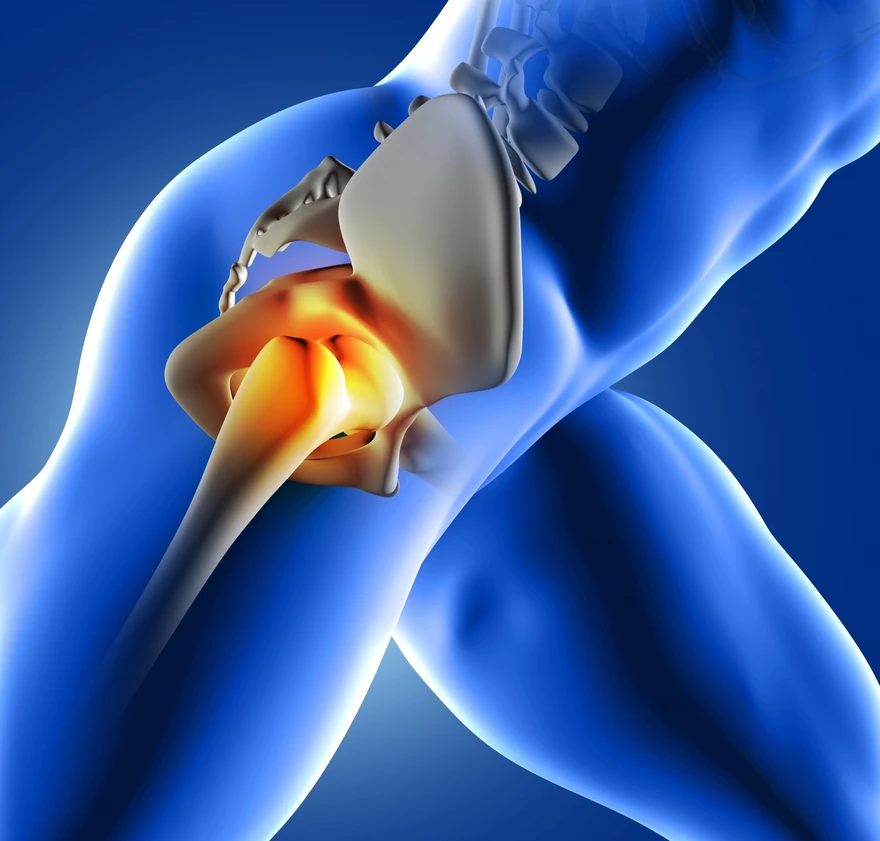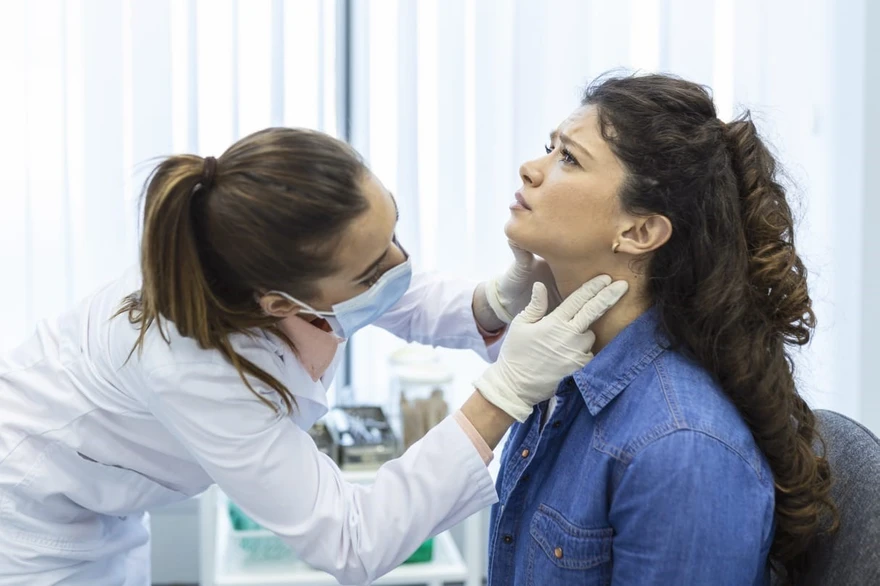Latest Blogs
Unveiling the Surprising Health Benefits of Pistachio Nuts
What are Pistachios? Pistachios are small, green nuts encased in a hard, beige shell, known for their distinct, mild sweet flavor and a crunchy texture. Originating from the Middle East, pistachios are now enjoyed worldwide. They are a nutritious snack, rich in protein, fibre, healthy fats, and essential vitamins and minerals. Pistachios are often eaten on their own, added to desserts, or used in cooking for a delightful crunch. They also contain antioxidants and have been linked to various health benefits. Are Pistachios good for you? Yes, pistachios are good for you! They are rich in nutrients, pistachio benefits include heart health, weight management, and improved digestion. Pistachio nutrition boasts high levels of protein, fibre, healthy fats, vitamins, and minerals such as vitamin B6, potassium, and antioxidants. These nutrients support overall health, boost immunity, and help in managing cholesterol levels. Common pistachio uses include snacking, adding to salads, desserts, and savoury dishes, or even as a topping for yogurt and oatmeal. Their delicious taste and numerous health benefits make pistachios a valuable addition to a balanced diet. Nutritional value of Pistachios A single serving (49 kernels) of pistachios contains: Calories: 159 Protein: 5.72 grams Carbohydrates: 7.7 grams Fat: 12.85 grams Fibre: 3 grams These delicious seeds are cholesterol-free and rich in vitamins and minerals such as manganese, phosphorus, copper, vitamin B6, and thiamin. Moreover, pistachio nutrition contains more potassium than a large banana and as much fiber as a cup of cooked broccoli! Pistachio benefits Pistachios, often praised for their unique flavor and vibrant green color, it also offer numerous health benefits. These small but mighty nuts are packed with essential nutrients and compounds that contribute to overall well-being. Let's delve into the various benefits of pistachios, categorized by their specific health advantages. High in antioxidants Pistachios are rich in antioxidants, which are vital for combating oxidative stress and protecting cells from damage. They contain significant amounts of lutein and zeaxanthin, which are known to support eye health. Additionally, the antioxidants in pistachios, such as polyphenols and tocopherols, help reduce inflammation and lower the risk of chronic diseases like cancer and heart disease. Supports digestive health Pistachios are an excellent source of dietary fibre, which are crucial for maintaining the digestive health. A single serving of pistachios provides a substantial amount of fibre, aiding a regular bowel movement and preventing constipation. Fibre also supports the growth of beneficial gut bacteria, which play a significant role in overall digestive health and immunity. Low in calories yet high in protein Despite being a nut, pistachios are relatively low in calories compared to other nuts. They are also high in protein, making them an ideal snack for those looking to maintain or lose weight without sacrificing essential nutrients. The protein content in pistachios helps in muscle building, repair and maintenance, making them a great addition to a balanced diet. May protect heart health Pistachios have been shown to support heart health by lowering bad cholesterol (LDL) and raising good cholesterol (HDL). They contain healthy fats, including monounsaturated and polyunsaturated fats, which are beneficial for better cardiovascular health. Regular consumption of pistachios has been associated with lower blood pressure and reduced risk of heart disease, due to their nutrient-rich profile, including potassium, magnesium, and fibre. Good for eye health As mentioned earlier, pistachios are rich in lutein and zeaxanthin, two antioxidants that are essential for eye health. These compounds help protect the eyes from damage caused by blue light exposure and reduce the risk of age-related macular degeneration (AMD) and cataracts. Including pistachios in your diet can contribute to maintaining good vision and overall eye health. May aid weight loss Pistachios are an excellent choice for those looking to lose weight due to their low-calorie content and high levels of protein and fibre. The fibre and protein in pistachios help increase feelings of fullness, reducing overall calorie intake. Additionally, the act of shelling pistachios slows down consumption, allowing more time for the body to register fullness, further aiding in weight management. May help lower blood sugar Pistachios have a low glycemic index, meaning they do not cause significant spikes in blood sugar levels after consumption. They are rich in fibre, protein, and healthy fats, all of which contribute to better blood sugar control. Studies have shown that incorporating pistachios into a balanced diet can help lower blood sugar levels and improve insulin sensitivity, making them beneficial for individuals with diabetes or those at risk of developing the condition. Beneficial for gut health The dietary fibre in pistachios not only aids in digestion but also promotes a healthy gut microbiome. The fibre acts as a prebiotic, feeding the beneficial bacteria in the gut and promoting their growth. A healthy gut microbiome is essential for an overall health, influencing everything from digestion to immune function and even mental health. Regular consumption of pistachios can help to maintain a balanced and diverse gut microbiome. Reduce colon cancer risk The fiber and antioxidants in pistachios may help reduce the risk of colon cancer. Fiber helps promote regular bowel movements and reduces the residence time of potential carcinogens in the colon. In addition, the antioxidants in pistachios help protect cells from damage and inflammation, which are factors in the development of cancer. Adding pistachios to your diet is a delicious way to support colon health and possibly reduce your risk of cancer. May lower cholesterol and blood pressure The potassium and magnesium content present in pistachios helps regulate the blood pressure, supporting cardiovascular health. Studies have demonstrated that incorporating pistachios into a balanced diet can lead to significant improvements in both cholesterol levels and blood pressure. Risks of eating pistachios Despite of their many benefits, there can be some pistachio side effects. For instance, roasted pistachios often contain high sodium levels. Consuming too much sodium can increase the risk of high blood pressure, heart disease, and stroke. Pistachios also contain FODMAPs (fermentable oligosaccharides, disaccharides, monosaccharides, and polyols), which can cause discomfort in people with irritable bowel syndrome or fructan intolerance. Symptoms can range from bloating to nausea and abdominal pain. For people with nut allergies, consuming pistachios can trigger severe allergic reactions like itchy skin or throat, difficulty swallowing, or even anaphylaxis. Conclusion Unveiling the incredible health benefits of pistachios clearly highlights why they deserve to be part of our regular diet. From being antioxidant-rich to supporting digestive health and potentially assisting in weight loss – pistachio benefits are numerous! However, like all good things, they should be consumed in moderation and as part of a balanced diet. At Metropolis Healthcare, we believe that informed health decisions start with accurate information. Our team of qualified technicians is ready to assist with home visits for blood sample collection, which are processed at our advanced diagnostic labs. With a commitment to delivering reliable results and personalised care, we aim to empower you on your journey to prioritising health.
Understanding Aphasia: Types, Symptoms, Causes, and Rehabilitation Techniques
What is Aphasia? Aphasia is a communication disorder that affects an individual’s ability to understand or use language. It usually occurs after a stroke or a brain injury, causing difficulties with speaking, understanding spoken language, reading, and writing. Individuals with aphasia may face a difficulty in speaking coherently or understanding what others are saying. As a result, it can be challenging for them to articulate their thoughts or comprehend written or spoken language. Who does it affect? Aphasia affects men and women equally from all backgrounds and can develop at any age, but studies shows that aphasia is most commonly diagnosed in adults over 65 years of age, and stroke is more common in older adults. How common is Aphasia? Aphasia affects around 2 million people worldwide each year. It is relatively a common condition caused by stroke or brain injury. Awareness and access to rehabilitation services are essential to support survivors in India and around the world. What are the symptoms of aphasia? Aphasia symptoms vary depending on the type and severity of the condition. Common aphasia symptoms includes difficulty speaking, finding right words, and forming sentences. Individuals may also struggle understanding spoken or written language, leading to problems following conversations or reading texts. Writing and reading impairments are also common with some people who are unable to write coherently or understand written material. Other aphasia symptoms also includes substituting the incorrect words or creating nonsensical sentences. Fluency problems can cause speech to halt or become difficult to speak. Comprehension problems may cause individuals to misunderstand questions or instructions. Recognizing these aphasia symptoms is crucial for an early diagnosis and an effective treatment, enabling those affected to have better communication and quality of life. What are the types of Aphasia? Aphasia is a language disorder resulting from brain damage, typically due to a stroke, head injury, or other neurological conditions. Understanding the different aphasia types is crucial for accurate diagnosis and treatment. There are several aphasia types, each affecting language abilities in distinct ways. Broca’s Aphasia: Also known as non-fluent or expressive aphasia characterized by difficulty in producing speech. Individuals with Broca’s aphasia can understand the language relatively well but but struggle to speak or write. Their speech is often stuttered and strained, skipping small words like "is" or "the." Wernicke’s Aphasia: Known as fluent or receptive aphasia, this type affects the comprehension. Individuals with Wernicke’s aphasia can produce speech fluently but often with little meaning. They may use incorrect words or create nonsensical sentences, making their speech difficult to understand. Global Aphasia: As the most severe form of aphasia, which affects all aspects of language. Individuals with global aphasia have serious difficulties in speaking, understanding, reading and writing. This aphasia type is caused by a damage to language areas of the brain. Anomic Aphasia: People with an anomic aphasia have difficulty finding the right words, especially nouns and verbs, making their speech vague and circumlocutory. Despite this, their comprehension, reading and writing skills remain relatively intact. Primary Progressive Aphasia (PPA): Unlike other aphasia types, which are caused due to sudden brain injuries, PPA is a gradual degeneration of brain tissue affecting language. It starts with a subtle language problem that progressively gets worsen over time. Conduction Aphasia: This type involves a difficulty in repeating words or phrases. Individuals with conduction aphasia understand and produce speech fairly well but struggle with repetition and may have frequent speech errors. Transcortical Aphasia: This category includes transcortical motor aphasia (similar to Broca's aphasia, but with intact repetition), transcortical sensory aphasia (similar to Wernicke's aphasia, but with preserved repetition), and mixed transcortical aphasia (combination of the two with preserved repetition). Each of these aphasia types requires a therapeutic approaches to address any specific language deficits and help the individuals to improve their communication skills. Accurate diagnosis of the different aphasia types is essential for effective treatment planning. What causes Aphasia? Aphasia causes are linked to damage in the language-dominant hemisphere which is usually on the left side. This damage can be caused by: Stroke (most common cause) Head injury Brain Tumour or Infection Neurodegenerative diseases like Alzheimer's Disease or Dementia Understanding the cause of aphasia is crucial as it guides treatment and rehabilitation strategies. How to diagnose Aphasia? Diagnosing aphasia involves a comprehensive assessment done by a speech-language pathologist who uses various tests to evaluate an individual's ability to speak, understand, read and write. Additionally, medical imaging procedures like CT scans, MRIs, or Positron Emission Tomography can also be employed to visualise the brain and determine the site and extent of damage. What tests will be done to diagnose this condition? To confirm a diagnosis of aphasia and create a comprehensive aphasia treatment plan, healthcare providers may use: Speech and Language Tests: These help evaluate an individual's ability to speak, understand spoken language, read, and write. CT Scan: This imaging test provides detailed images of the brain, helping pinpoint areas of damage. MRI Scan: It offers comprehensive images of the brain’s internal structures. Positron Emission Tomography (PET): This test helps to evaluate brain function and identifies the areas where brain activity is reduced. How is Aphasia treated? The main goal of aphasia treatment is to improve the individual's ability to communicate effectively. The aphasia treatment approach usually involves: Speech-Language Therapy: A speech-language pathologist helps with exercises to improve language abilities and use alternative communication methods. Support Groups: These groups provides opportunities for social interaction and communication practices. Computer-Based Therapy Programmes: These can supplement traditional speech-language therapy. How to prevent Aphasia? Preventing aphasia aims to reduce the risk factors for stroke and other conditions that can lead to brain damage. This includes maintaining healthy lifestyle, effectively managing chronic diseases like diabetes and high blood pressure, avoiding tobacco and excessive alcohol consumption, and staying physically active. What is the outlook for people who have Aphasia? Living with aphasia can be difficult. However, many people are able to regain functional communication through therapy and rehabilitation techniques. With support from family, caregivers and therapists, recovery from aphasia can be greatly improved. Conclusion Understanding aphasia - its types, symptoms, causes and treatment options - is crucial for identifying it early on and commencing effective treatment. Despite the challenges presented by aphasia, individuals can lead fulfilling lives with the right therapeutic strategies and support systems. At Metropolis Healthcare, we understand the importance of early diagnosis and intervention. Our sophisticated diagnostic services offer accurate results that can guide your healthcare provider in formulating an effective treatment plan. We are committed to empowering patients in their health journey with reliable, timely, and patient-centric services. Remember, while aphasia may change the way you communicate, it doesn't define who you are. Support, patience, and understanding go a long way in navigating through life with aphasia.
Exploring Avascular Necrosis (Osteonecrosis): Symptoms Causes, and Treatment
What is avascular necrosis? Avascular necrosis (AVN), also known as osteonecrosis, is a condition where bone tissue dies due to a lack of blood supply. Without blood, the bone tissues break down and the bone can collapse. This condition often affects the ends of long bones such as the femur, leading to joint pain and potential arthritis. Avascular necrosis causes range from injury to certain medical conditions such as steroid use, excessive alcohol consumption, and blood disorders. Avascular necrosis symptoms include pain and limited range of motion. Early diagnosis and treatment are important to prevent serious joint damage and improve the results of drugs, treatments, or surgery. How common is avascular necrosis? In India, about 16,000 new cases of avascular necrosis (AVN) are recorded every year. Globally, it affects about 10,000 to 20,000 new cases per year. The prevalence is increasing due to the increase in risk factors such as the use of steroids and the consumption of alcohol. Where does avascular necrosis develop? Although avascular necrosis causes bone tissue problems in all joints, the hip is most commonly affected. Other joints that may develop avascular necrosis include: Ankles Jaw Knees Upper Arm (humerus) and shoulders What causes avascular necrosis? Avascular necrosis causes bone tissue to die due to insufficient blood supply. The most common avascular necrosis causes include traumatic injuries, such as fractures or dislocations, which can damage blood vessels. Non-traumatic avascular necrosis causes includes a prolonged use of high-dose steroids and excessive alcohol consumption, can cause a fatty deposits to build up in the blood vessels, restricting blood flow. Medical conditions like sickle cell disease, lupus, and blood clotting disorders also contribute to avascular necrosis. Additionally, certain treatments like radiation therapy and chemotherapy can also damage blood vessels, resulting avascular necrosis. Early diagnosis is essential to manage and prevent further bone damage. What bone fractures cause traumatic avascular necrosis? Traumatic avascular necrosis can occur following a hip bone fracture or joint dislocation. For example, about 20% of the individuals who dislocate their hips develop avascular necrosis. What medical conditions or problems cause nontraumatic avascular necrosis? Nontraumatic avascular necrosis is caused from diseases or medical conditions that obstructs blood flow to the bone tissue. These conditions includes osteoporosis, blood disorders such as sickle cell anemia, diabetes, cancer treatments such as radiation therapy, decompression sickness in divers, HIV, lupus, and organ transplants. What lifestyle activities increase the risk of developing avascular necrosis? Your lifestyle choices have a significant impact on the likelihood of developing avascular necrosis. High-risk behaviours include: Excessive consumption of alcohol Smoking Prolonged use of corticosteroids (like Prednisone) What are the symptoms of avascular necrosis? Symptoms of avascular necrosis are usually includes joint pain that worsens with weight-bearing activities and decreases with rest. The pain may be mild at first, but may develop into severe discomfort as the condition progresses. Other symptoms of avascular necrosis include limited exercise range, stiffness and joint collapse. The affected areas are hips, shoulders, knees and ankle joints. If left untreated, avascular necrosis will cause normal destruction and require a common replacement surgery. How is avascular necrosis diagnosed? Diagnosis for avascular necrosis involves multiple steps: Assessment of symptoms by a healthcare provider Physical examination X-rays to detect fractures and signs of arthritis Magnetic resonance imaging (MRI) These diagnostic tests help in capturing precise images showing any damage or changes in your bones. How do healthcare professionals treat avascular necrosis? Avascular necrosis treatment depends on the extent of damage to your bones. For smaller bones that don't bear weight, potential treatments include: Cold packs Heat Treatment Rest Nonsteroidal anti-inflammatory drugs (NSAIDs) Physical Therapy to ease joint tenderness and increase range of motion Using walking aids such as canes and crutches For more advanced forms of avascular necrosis, surgery is usually necessary. What is the treatment for more advanced forms of avascular necrosis? Advanced forms of avascular necrosis typically require surgical intervention. The surgical options commonly include: Core Decompression: Your surgeon drill small holes in the affected bones to improve blood flow. This procedure may be combined with injections or bone grafts to promote healing. Joint Replacement: Damaged joints are replaced with artificial joints. Hip and knee replacements have been shown to be 95% effective in relieving pain and restoring mobility in patients with avascular necrosis. How can I prevent avascular necrosis? While avascular necrosis causes cannot always be prevented, there are steps you can take to reduce your risk: Quit smoking Limit your alcohol intake Monitor your cholesterol levels If you are taking corticosteroids for a chronic condition, consult with your healthcare provider about reducing the doseage. Is there a cure for avascular necrosis? Avascular necrosis cannot be completely cured, but early intervention can slow its progression. Avascular necrosis treatments includes medications, lifestyle changes, physical therapy, and surgical options such as core decompression or joint replacement. Timely diagnosis and treatment are essential to maintain joint function and reduce pain. When to see a doctor? Visit a doctor for avascular necrosis if you have persistent joint pain, especially if it worsens with weight-bearing activities. Early diagnosis is crucial, so see a doctor if you notice stiffness, limited mobility, or unusual discomfort in your joints to prevent further damage. Conclusion Understanding avascular necrosis empowers you with the knowledge needed to make informed health decisions. While this condition can significantly impact one's quality of life, it is crucial to remember that early diagnosis and appropriate treatment can delay its progression. If you're noticing symptoms linked to avascular necrosis or you're at risk due to lifestyle factors or underlying health conditions, consider availing Metropolis Healthcare’s diagnostic services. Known for their accurate pathology testing and health check-up services, Metropolis' qualified technicians make at-home visits for blood sample collection ensuring comfort and convenience for patients.
Understanding Jock Itch: Causes, Symptoms, and Effective Remedies
What is Jock Itch? Jock itch or tinea cruris is a fungal skin infection that manifests as an itchy rash typically affecting the groin and inner thighs. Often compared to ringworm, this infection got its name because it is common among athletes and those who sweat excessively. What does Jock Itch look like? Jock itch or tinea cruris infection includes a rash that originates itself in the fold of the area of the groin, which extends down to the upper thigh and the buttocks. The center of the rash often clears as it expands further. You may also notice small blisters around the edge of the rash. The jock itch rash might appear red, brown, purple or grey depending on your skin color. Who does Jock Itch affect? While anyone can get jock itch, certain groups are more at risk: Males Teens and young adults Individuals who wear tight-fitting clothes People who sweat heavily Those with weakened immune systems Sufferers of athlete's feet Can women get Jock Itch? Yes, women can also get jock itch, although it is more common in men. How does Jock Itch affect my body? Jock itch, which is caused by fungal infection in the groin area, results in itching, redness, and a rash. It affects the skin in the groin, inner thighs, and around the buttocks causing discomfort and irritation. It rarely affects the genitals (penis, scrotum, vulva). Your skin may develop an itchy rash. Your skin may change color, crack, peel or flake. Sometimes tiny bumps or blisters may appear around the edges of the rash. However, proper hygiene, antifungal treatments, and avoiding tight clothing help manage and prevent recurrence of jock itch. What are the symptoms of Jock Itch? Jock itch symptoms includes an itching and a red, scaly rash in the groin area. This rash may spread to the inner thighs, buttocks, and genitals, causing discomfort and irritation. Jock itch symptoms can be alleviated by keeping the affected area clean and dry, and using antifungal creams. What causes Jock Itch? The primary jock itch causes is a fungus that thrives in the warm, moist areas of the body. The same microorganisms are often responsible for athlete's foot, highlighting the interdependence of these conditions. Infections that can cause jock itch can be spread through skin-to-skin contact or by using contaminated towels or clothing. Is Jock Itch contagious? Yes, jock itch or tinea cruris is contagious. As it can spread through direct skin-to-skin contact or by sharing towels, clothing, or sports equipment with an infected person. Avoiding contact and practicing good hygiene can help prevent the spread of jock itch. How does Jock Itch spread? Jock itch is spread through direct contact with an infected person or by sharing contaminated items such as towels, clothing or sports equipment. The condition thrives in hot, humid environments, making it common in athletes and people who sweat a lot. The fungi responsible for jock itch, such as dermatophytes such as Trichophyton rubrum, can survive on surfaces and fabrics facilitating their transmission. Avoiding shared objects, maintaining good personal hygiene, and wearing loose, breathable clothing helps prevent the itching from spreading and reduces the risk of recurrence. Prompt jock itch treatment with antifungal medications is essential to relieve jock itch symptoms and prevent further spread of jock itch causes. How is Jock Itch diagnosed? Doctors usually diagnose jock itch based on the appearance of the rash and its location. However, if required, they may also take skin scrapings from the infected area to examine under a microscope for definitive jock itch diagnosis. What tests will be done to diagnose Jock Itch? If your doctor needs to confirm a jock itch diagnosis, they might perform a test called a KOH exam. In this test, a sample of your skin cells are placed on a slide and treated with potassium hydroxide (KOH). This substance helps reveal fungal cells under a microscope. Will Jock Itch go away on its own? With proper treatment and self-care measures such as keeping the affected area dry and clean, jock itch usually clears up within 1 to 3 weeks. However, if the jock itch symptoms persist beyond this period or worsen, it is essential to consult a doctor. How is Jock Itch treated? Over-the-counter antifungal creams are often the first line of jock itch treatment. If these aren't effective, your doctor may prescribe stronger creams or oral medication. What is the fastest way to cure Jock Itch? Jock itch treatment generally involves over-the-counter antifungal creams or sprays that can help clear up the infection within 1-3 weeks. However, please note that not all cases of jock itch are alike. Some severe instances may require prescription-strength topical or oral antifungals prescribed by a healthcare provider. However, the thumb rule here is - if you are not noticing any improvement within a week of self-care and OTC treatment or if your jock itch symptoms persist after three weeks despite of a consistent treatment – it's time to consult a dermatologist or a medical professional. Can rubbing alcohol cure Jock Itch? Rubbing alcohol can help cure mild jock itch. It can also prevent or stop fungal growth on the surface of your skin. However, using rubbing alcohol on sensitive areas like the groin can cause intense burning and irritation. It can also dry out your skin excessively, leading to further itching and discomfort. For safe and effective jock itch treatment, it is best to rely on clinically proven antifungal creams or sprays while maintaining good personal hygiene. What are the home remedies for Jock Itch? In addition to rubbing alcohol, a few home remedies may help prevent or treat jock itch. Some essential oils can help in preventing bacterial growth. These include tea tree oil, bitter orange oil, peppermint oil, and eucalyptus oil. However, they cannot completely prevent fungal infections. Garlic contains a compound called ajoene. Ajoene can prevent or stop the growth of bacteria. However, like essential oils, it can completely prevent fungal infections. If you are allergic to essential oils or garlic, do not use them to treat itching. Remember, these remedies should complement, not replace, any prescribed jock itch treatment. Always consult a healthcare provider for persistent or severe jock itch symptoms. How do I manage my Jock Itch symptoms? Managing jock itch symptoms involves a combination of medication and lifestyle changes: Proper hygiene: Wash and dry the groin area regularly and thoroughly. Medication Adherence: Continuing to take prescribed medication even when symptoms improve. Choice of Clothing: Choosing loose clothing and underwear made of natural fibers such as cotton. How soon after treatment will I feel better? The time it takes to get relief from jock itch symptoms varies depending on the severity of the infection and how diligently you follow treatment instructions. Typically, jock itch symptoms improve within a few days of starting treatment in case of a mild jock itch. However, it may take 1 to 3 weeks for the infection to completely clear up. Remember that you should not stop taking the medicine before the prescribed period is over, even if you feel better. This ensures that the fungus is completely eliminated and reduces the risk of recurring jock itch. How can I reduce my risk? Reducing your risk of getting jock itch involves a few simple steps: Stay dry: Especially in the groin area. Always use a clean towel to dry yourself after showering or exercising. Wear Clean Clothes: Change your underwear daily or more often if you sweat a lot Don't Share Personal Items: This includes towels and clothing Control Athlete’s Foot: As it can spread to the groin area causing jock itch How can I prevent Jock Itch? In addition to reducing risks, here are some preventive measures for jock itch: Choose loose fitting clothes: Tight clothing can rub against your skin and make you more susceptible to jock itch Use antifungal powders: Especially if you're an athlete or sweat heavily Maintain good hygiene practices: Like washing hands regularly and avoiding shared public spaces like locker rooms and showers barefoot What can I expect if I have Jock Itch? Typically, jock itch causes a rash that begins in the groin crease and then gradually spreads to the upper thigh and buttocks. This rash may appear red, brown, purple or gray depending on the color of your skin and is often ring-shaped lined with small blisters. The center of the rash usually disappears as it spreads. The most noticeable symptom is itchiness, which can range from mild to severe. You may also notice scaly skin within these areas. When to see a doctor? If any discomfort persists despite self-care measures, or if the jock itch hasn't improved after a week of over-the-counter antifungal treatments, it's time to see a healthcare professional. If jock itch or tinea cruris infection has not cleared up after three weeks of treatment, or if you develop a fever or severe pain, seek medical attention immediately. Conclusion Understanding jock itch its causes, symptoms, and effective remedies can equip you with the knowledge needed to tackle this common skin infection. While it is often manageable with the help of over-the-counter treatments and good hygiene practices, consultations with healthcare professionals are essential for persistent or severe cases of jock itch. Always remember that accurate pathology testing is a key part of managing your health. Metropolis Healthcare, a leading chain of diagnostic labs across India, provides reliable services like at-home blood sample collection for your convenience. Prioritize your health today by exploring Metropolis top-tier diagnostic services.
Managing Keratosis Pilaris (Chicken Skin): Symptoms, Treatment
What is keratosis pilaris? Keratosis pilaris is a common, harmless skin condition which is characterized by small, rough bumps on the skin, usually on the upper arms, thighs, cheeks, or buttocks. These bumps are usually flesh-colored or reddish, dry and rough to the touch. Keratosis pilaris, also known as chicken skin disease, it occurs when keratin (a protein found in the skin) builds up and blocks hair follicles. It is generally harmless and improves with age, but can also affect appearance. Keratosis pilaris treatment involves the use of moisturizing lotions, scrubs, and sometimes prescription medications to smooth the skin and reduce the appearance of “chicken skin” bumps. Who does keratosis pilaris affect? Keratosis pilaris can affect anyone regardless of age or gender, but it is more common in young children and teenagers. Keratosis pilaris is also common in people with certain medical conditions, such as dry skin, eczema or obesity. People with fair skin are often more prone to this condition. How common is this condition? This skin condition is so common that many dermatologists consider it a skin type rather than a medical condition. Although estimates vary between populations, studies show that keratosis pilaris affects about 50% to 80% of teenagers and 40% of adults will develop these bumps at some point in their lives. This event highlights the importance of understanding keratosis pilaris and managing it effectively. How does keratosis pilaris affect my body? Keratosis pilaris is characterized by a buildup of keratin - a hard protein that protects skin from harmful substances and infections. This keratin blocks the opening of hair follicles, leading to patches of rough, bumpy skin. It's not fully clear why keratin builds up in people with keratosis pilaris, but it often occurs along with genetic diseases or skin conditions like atopic dermatitis. What are the symptoms of keratosis pilaris? Keratosis pilaris symptoms include small, rough bumps on the skin, commonly found on the upper arms, thighs, cheeks, or buttocks. These bumps, known as keratosis pilaris, are often flesh-colored or slightly red and may appear dry and rough. They typically develop around hair follicles, giving the skin a bumpy texture. Keratosis pilaris symptoms can range from mild to more pronounced, this causes the affected area to feel rough and sometimes itchy. The condition is usually harmless and improves with age, but may persist into adulthood. Management of keratosis pilaris symptoms usually involves using a moisturizing lotion or cream, gentle exfoliation to remove dead skin cells, and sometimes prescription treatments to help smooth the skin and reduce the appearance of bumps. What causes keratosis pilaris? The condition commonly appears during childhood and may persist into adulthood, affecting various areas such as the upper arms, thighs, cheeks, or buttocks. Managing keratosis pilaris causes often involves moisturizing the skin, gentle exfoliation, and occasionally using topical treatments to help reduce the buildup of keratin and improve the appearance of the skin. Keratosis pilaris causes are primarily attributed to the buildup of keratin, a protein that forms hair follicles and skin. In keratosis pilaris, excess keratin blocks the hair follicles, causing the characteristic rough, bumpy skin texture. The exact cause of keratosis pilaris is not fully understood, but genetic factors may be involved as it often runs in families. Dry skin and some skin conditions can make symptoms worse. The condition usually appears during childhood and can continue into adulthood and affecting multiple areas, such as the upper arms, thighs, cheeks or buttocks. Ways to manage keratosis pilaris causes includes moisturizing the skin, gentle exfoliation, and sometimes using topical treatments as it helps reduce keratin build-up and improve the appearance of the skin. Is keratosis pilaris caused by a vitamin deficiency? No, keratosis pilaris is not caused by a vitamin deficiency. This is mainly due to the accumulation of keratin, which blocks the hair follicles, resulting in rough, uneven skin. While certain vitamins like vitamin A may help improve skin health, keratosis pilaris is generally attributed to genetic factors and skin conditions rather than nutritional deficiencies. Is keratosis pilaris contagious? No! Despite its conspicuous presence, keratosis pilaris isn't contagious. The bumps don't usually cause discomfort or itching and can't be spread to others through contact. How is keratosis pilaris diagnosed? Usually, physical examination by a dermatologist is enough to diagnose keratosis pilaris. Your doctor will visually assess your skin, taking into account factors such as your age, skin appearance and affected areas. Keratosis pilaris usually does not require a formal examination. How do you get rid of keratosis pilaris? Although there is no permanent cure for keratosis pilaris, various treatment options for keratosis pilaris can help manage its symptoms. Over-the-counter moisturizing lotions Regular application of moisturizers can soothe dry skin and improve its appearance. Medicated creams Topical creams containing lactic acid or urea can help loosen and remove dead skin cells. Exfoliating Gentle exfoliation can remove dead skin cells and unblock hair follicles. Laser treatments In severe cases of keratosis pilaris, laser therapy could be a viable option, although it is not routinely recommended. Gentle skincare Avoiding harsh soaps and hot water baths that dry out your skin can significantly manage keratosis pilaris symptoms. Home Remedies In addition to the above procedures, you can also use home remedies to treat keratosis pilaris: Taking short, warm baths to unclog pores Using a humidifier to maintain skin moisture Applying hydrating lotions with alpha-hydroxy acids Avoiding tight clothes that can irritate the skin How can I prevent keratosis pilaris? Although keratosis pilaris cannot be prevented, certain skin care methods can prevent and reduce the appearance of keratosis pilaris. Making sure your skin is properly moisturized with an oil-free cream or ointment can help prevent clogged pores that cause keratosis pilaris. Conclusion Although keratosis pilaris is often frustrating, it is a manageable condition with the right knowledge and skin care routine. Regular moisturizing, gentle exfoliation and avoiding skin irritants can help manage this skin condition. However, everyone's skin responds differently, Therefore, it is important to consult a doctor or dermatologist to create an individualized keratosis pilaris treatment plan. Remember, your health is your greatest wealth. Regular check-ups and timely diagnostics are key to maintaining good health. Metropolis Healthcare provides at-home blood testing and health check-up services across India, delivering accurate results to help you stay on top of your health game. With their expert team and advanced diagnostic labs, prioritising your health just got easier!
Dysphagia: Causes, Treatment, Symptoms and Therapeutic Approaches
What is dysphagia (difficulty swallowing)? Dysphagia, or difficulty swallowing, refers to a condition where an individual struggles to pass food or liquid from the mouth to the stomach. This condition can cause pain while swallowing or even make swallowing impossible in severe cases. However, occasional swallowing difficulties caused by eating too quickly or chewing improperly are usually nothing to worry about, whereas persistent dysphagia may indicate a serious health problem that requires an appropriate dysphagia treatment. What are the types of dysphagia? Dysphagia, or difficulty swallowing, is categorised into two main types based on where the swallowing problem occurs: Esophageal dysphagia: This type occurs in the esophagus, the tube that carries food from the throat to the stomach. Esophageal dysphagia can be caused by structural issues that narrows or blocks the oesophagus, such as tumours, strictures (narrowing), or conditions like GERD (Gastroesophageal Reflux Disease). Symptoms may include pain or discomfort while swallowing, sensation of food getting stuck in the chest or throat, regurgitation of food, or heartburn. Oropharyngeal dysphagia: This type occurs in the mouth (oro-) and throat (pharyngeal) areas. It is often caused by neurological conditions that affect the muscles and nerves that control swallowing. The most common causes includes stroke, Parkinson's disease, multiple sclerosis, and head or neck injuries. Symptoms may include coughing or choking while eating, difficulty swallowing, and food sticking to the throat. What causes dysphagia? Swallowing is a complex process involving many muscles and nerves, Dysphagia causes can be attributed to any condition that weakens or damages these muscles or nerves or narrows the back of the throat. Some common dysphagia causes include: Neurological disorders: Conditions like multiple sclerosis, muscular dystrophy and Parkinson's Disease can cause dysphagia. Esophageal conditions: Certain diseases such as GERD (gastroesophageal reflux disease), esophageal tumors, and Achalasia can cause difficulty swallowing. Radiation Therapy: Treatments for cancer can cause inflammation and scarring in the esophagus, leading to dysphagia. What are the risk factors for Dysphagia? Risk factors for dysphagia, or difficulty swallowing, include aging (due to natural wear and tear on the esophagus) and certain health conditions. People with neurological or nervous system disorders are more likely to experience difficulty swallowing. How is Dysphagia diagnosed? Diagnosing dysphagia involves several steps to identify the underlying causes and determine the appropriate treatment. Healthcare providers begin with a comprehensive assessment, which may include: Assessment and History: A detailed medical history is obtained, including symptoms, onset, and any underlying conditions that may contribute to dysphagia. This often involves questions about eating habits, swallowing difficulties, and associated symptoms such as coughing or choking. Physical Examination: A thorough examination of the mouth, throat, and neck to check for abnormalities that could cause difficulty swallowing Swallowing Tests: Various tests may be conducted, such as: Modified Barium Swallow (MBS): Involves swallowing food or liquid mixed with barium to monitor swallowing function using X-ray imaging. Flexible Endoscopic Evaluation of Swallowing (FEES): A scope with a camera is inserted through the nose to view the swallowing process directly. Flexible endoscopic evaluation of swallowing (FEES): A scope with a video camera is inserted into the nose to directly observe the swallowing process. Imaging Studies: CT scans or MRIs may be used to assess structural abnormalities or injuries affecting swallowing. Esophageal manometry: Measures muscle contractions of the esophagus to assess its function How is dysphagia treated? Dysphagia treatment depends on the underlying cause and severity of the difficulty swallowing. Options include: Behavioural Therapy: A speech therapist can teach exercises to strengthen the swallowing muscles and improve coordination. Dietary Modifications: Adjusting food texture (e.g., pureed, soft) or consistency (e.g., thickened liquids) to make swallowing easier and safer Medical Interventions: Medications may be prescribed to reduce acid reflux, treat infections, or manage underlying conditions like Parkinson's disease. Surgical Procedures: In cases of structural abnormalities or tumors, surgery may be necessary to correct or alleviate blockages affecting swallowing. Feeding Tubes: In severe cases where swallowing is severely impaired, a feeding tube may be inserted to ensure adequate nutrition and hydration. Lifestyle Changes: Improving posture while eating, taking smaller bites, and eating slowly can help manage dysphagia symptoms. Each dysphagia treatment plan is tailored to the specific needs of the individual and may involves a multidisciplinary approach which involves healthcare professionals such as gastroenterologists, neurologists, and nutritionists. Regular follow-up and adjustments to the treatment plan are essential to monitor progress and manage any ongoing challenges related to dysphagia. Rehabilitation for swallowing problems Rehabilitation for problems related to difficulty swallowing, often performed by speech therapists, focuses on strengthening the swallowing muscles, improving coordination, and teaching techniques to improve safe and effective swallowing. What are the complications or risks of not treating Dysphagia? Failure to treat dysphagia can lead to several complications and risks. These include malnutrition and dehydration due to difficulty eating and drinking safely Aspiration pneumonia is a serious risk, where food, liquid or saliva entering the airways can cause lung infections Weight loss and reduced quality of life may also occur Additionally, untreated dysphagia can worsen underlying conditions such as neurological disorders or esophageal diseases, potentially leading to more serious health problems down the line Early dysphagia diagnosis and appropriate dysphagia treatment are crucial to prevent these complications and improve swallowing function and overall health When to see a doctor about difficulty swallowing? Frequent discomfort while swallowing is a cause for concern. If you’re regularly having difficulty swallowing or suffer from weight loss, regurgitation, or vomiting along with it, consult a healthcare professional immediately. Conclusion Understanding dysphagia, or difficulty swallowing, is the first step in effectively treating this condition. While it can be concerning, knowing the causes and types can provide reassurance and guide you towards appropriate diagnostic methods and treatments. Consult your doctor if you regularly have difficulty swallowing. At Metropolis Healthcare, we're committed to aiding your journey towards better health with our expert pathology lab services. Our team of qualified technicians will easily collect blood samples from your home, ensuring that careful results are provided through our user-friendly Truealth app. Prioritizing your health is within reach with accurate knowledge and quality medical care. Stay informed, stay healthy!
BMI (Body Mass Index) Chart: How To Calculate
What is body mass index (BMI)? A term you may have come across in health check-ups or gym brochures is body mass index (BMI). This is relatively simple measurement used by healthcare providers to check the proportionality between your height and weight. The formula involves dividing your weight (in kilograms) by the square of your height (in meters). For instance, if a man weighs 70 kg and his height is 1.75 m, his BMI would be calculated as follows: BMI = 70 / (1.75^2) = 22.9 The resulting number provides an estimation of one's total body fat; the higher the figure, generally the greater the amount of body fat. What is BMI used for? Healthcare providers use BMI as a preliminary diagnosis tool. It facilitates identification of weight types and serves as a screening tool for certain health conditions. Diagnosing weight types with BMI BMI or Body Mass Index, is a numerical measurement derived from a person's height and weight. It is often used to classify people into different weight categories based on their BMI value. Typically, healthcare practitioners classify different weight types based on the following BMI chart ranges (in kg/m2): Underweight: Less than 18.5 Optimum range: 18.5 to 24.9 Overweight: 25 to 29.9 Class I obesity: 30 to 34.9 Class II obesity: 35 to 39.9 Class III obesity: More than 40 BMI provides healthcare professionals with a simple way to assess whether a person is underweight, normal weight, overweight or obese. This classification helps diagnose weight-related problems and determine potential health risks associated with weight status. However, BMI or Body Mass Index is not the only tool used to identify weight types. Other methods include using callipers to measure waist circumference or skin thickness in specific areas of the body, such as under the shoulder blades and the back of the upper arm. Screening for health risks with BMI Beyond diagnosing weight types, BMI also serves as a screening tool for assessing health risks associated with weight. Different BMI categories correlate with varying degrees of health risk: Underweight: Individuals with a BMI less than 18.5 may be at risk for infertility, malnutrition, weakened immune function and osteoporosis. Normal weight: Falling within the healthy BMI range of 18.5 to 24.9 indicates a lower risk of weight-related health problems as compared to other BMI categories. Overweight: A BMI of 25 to 29.9 increases the risk of developing conditions such as hypertension, type 2 diabetes, heart disease, and certain cancers. Obesity: BMI 30 or a higher range significantly increases the risk of serious health problems, including cardiovascular disease, stroke, sleep apnea and joint problems. Healthcare providers use BMI as a starting point to discuss potential health risks related to weight status. It informs discussions about lifestyle modification, like dietary changes and exercise routines, aimed at improving overall health and reducing the risk of chronic diseases related to weight. Although BMI is a valuable screening tool, it does have some limitations. It does not directly measure the percentage or distribution of body fat, which can vary significantly from person to person. Therefore, individuals with a muscular build or higher muscle mass may have a higher BMI without necessarily having an unhealthy level of body fat. Also, remember that many factors like genetics or lifestyle habits can also contribute to these health conditions even if your BMI is not high. How do I calculate my BMI? Now that we have understood what BMI is used for, let's understand how to calculate BMI. To calculate your BMI (Body Mass Index) in kilograms, divide your weight in kilograms by your height in meters squared. The formula is BMI = weight (kg) / height^2 (m^2). For example, if you weigh 70 kilograms and your height is 1.75 meters , the calculation is 70 / (1.75 x 1.75) = 22.86. This result places you in the normal weight category (18.5 to 24.9 BMI) on the BMI chart, providing a general indication of your weight status relative to your height. What is a healthy BMI? According to the World Health Organization, a healthy BMI range lies between 18.5 and 24.9. But remember, it is not just about the number! Your overall health is determined by many factors like genetics, activity levels, lifestyle habits including smoking or drinking alcohol, and mental health conditions. What are the limitations of BMI? While BMI is an easily accessible tool for assessing an individual's body fat estimation it does have a certain limitations. Limitations of using BMI to help diagnose weight types The fundamental drawback in using BMI for diagnosing weight type is that it does not differentiate between lean body mass (the weight of everything in your body except fat) and fat mass, which means that a muscular person can have a high BMI despite having low body fat, and vice versa. Additionally, the same BMI chart is used for both males and females, even though females generally have more body fat than males. The table also does not take into account average changes in adult height over time, or specific population groups such as athletes, the elderly, pregnant women, or people who suffer from muscle wasting due to medical conditions. Limitations of using BMI as a screening tool for health conditions Using BMI as a health risk assessment tool also has its limitations. It does not measure where or how body fat is distributed; having excess fat in your abdomen vs thighs impacts your health differently. The link between BMI and mortality rate also often overlooks other factors such as family history of diseases, lifespan or history of cancer. Conclusion Understanding the body mass index (BMI) can be an essential step to understand your weight and wellness better. It is a useful tool for obtaining a general idea of your body fat, but it is crucial to remember that it is only part of the puzzle. Your overall health is influenced by various factors, including genetics, lifestyle, mental well-being and much more. If you are concerned about your BMI and what it means for your health, don't hesitate to reach out to healthcare professionals. At Metropolis Healthcare, we strive to assist you on your journey to wellness. With our advanced diagnostic labs and qualified technicians ready for at-home sample collection, we ensure that prioritising your health has never been easier!
 Home Visit
Home Visit Upload
Upload























 WhatsApp
WhatsApp